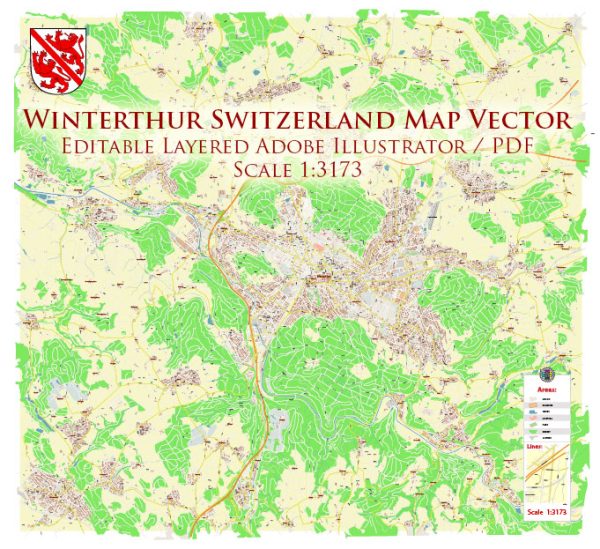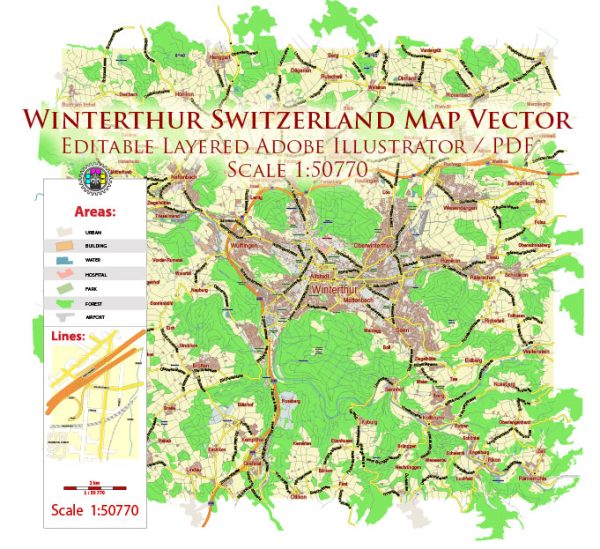Winterthur is a city in the canton of Zurich in northern Switzerland, and it has a rich history of urban development that dates back centuries. Here’s a brief overview of the history of urban development in Winterthur:
- Medieval Origins (12th-15th centuries): Winterthur’s history can be traced back to the Middle Ages when it was founded as a small settlement. The city’s development was influenced by its strategic location along trade routes, leading to the growth of crafts and trade. The medieval Old Town still retains some of its historic character with narrow streets, medieval buildings, and the landmark St. Laurenzen Church.
- Economic Growth and Industrialization (16th-19th centuries): In the 16th century, Winterthur experienced economic growth, partly due to the reformation movement. However, the city truly flourished during the 18th and 19th centuries when it became an industrial center. The textile industry, in particular, played a significant role in shaping the urban landscape. The city’s industrialization led to the construction of factories, warehouses, and worker housing.
- Railway Expansion (19th century): The advent of the railway in the 19th century further facilitated Winterthur’s economic development. The railway connections enhanced trade and transportation, making the city a hub for industry and commerce. The main railway station, built in the mid-19th century, stands as a testament to this era of expansion.
- Cultural and Educational Hub (20th century): In the 20th century, Winterthur continued to evolve as a cultural and educational center. The city is home to the Winterthur Museum, which houses an extensive collection of art and artifacts, and the Winterthur Institute of Arts and Sciences. These institutions contribute to the cultural vibrancy of the city.
- Post-War Reconstruction and Modernization (mid-20th century onwards): Like many European cities, Winterthur underwent post-war reconstruction in the mid-20th century. The city expanded with new residential areas, infrastructure improvements, and the development of commercial centers. Modern architecture became more prevalent, blending with the historic fabric of the city.
- Contemporary Urban Development: In recent decades, Winterthur has focused on sustainable urban development and the preservation of its historical heritage. The city has implemented initiatives to enhance public spaces, promote green areas, and improve transportation. There’s an emphasis on balancing modern urban needs with the preservation of the city’s cultural and historical identity.
Today, Winterthur stands as a dynamic city with a mix of historic charm and modern amenities, making it a cultural, economic, and educational hub in the region.



 Author: Kirill Shrayber, Ph.D.
Author: Kirill Shrayber, Ph.D.